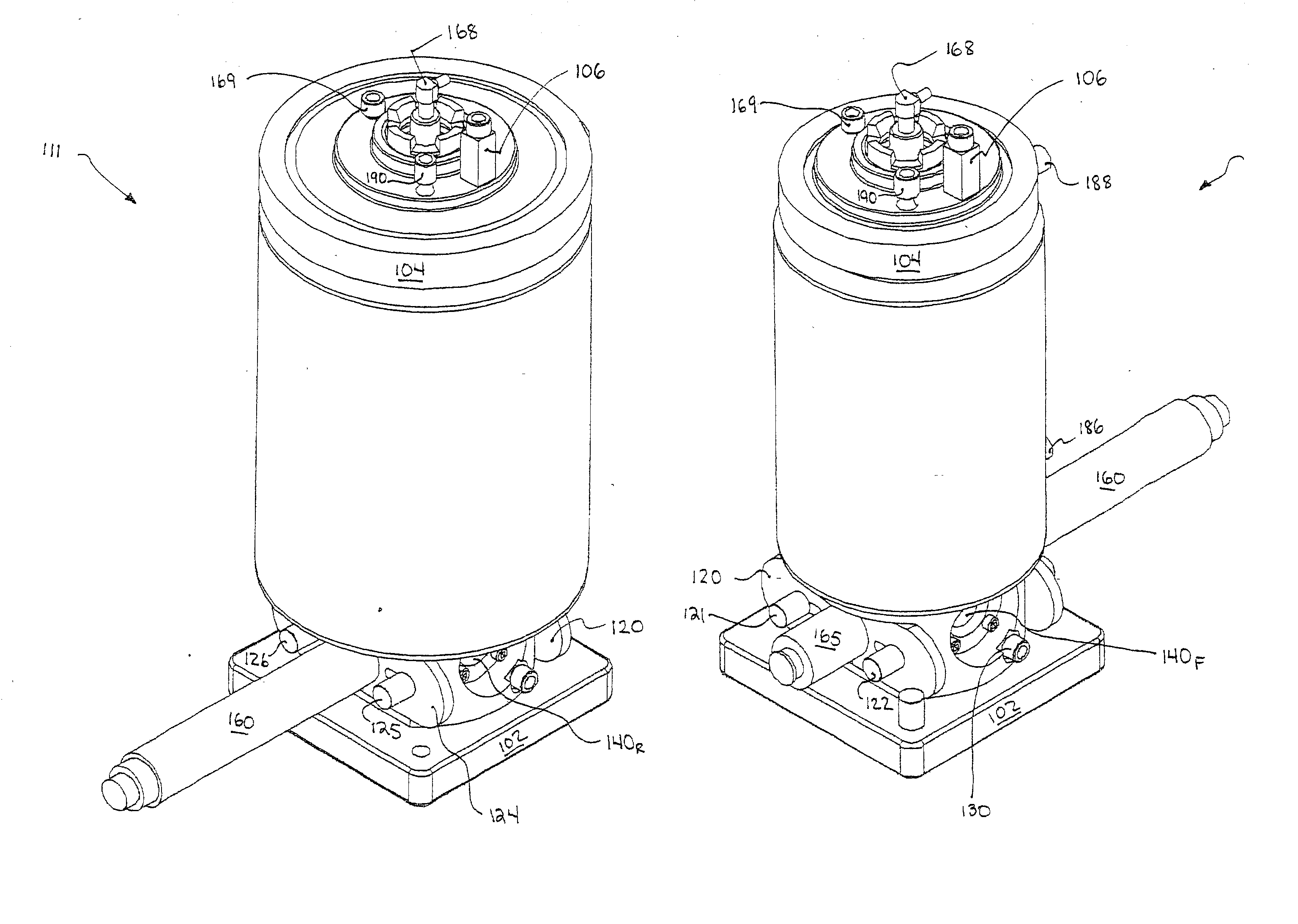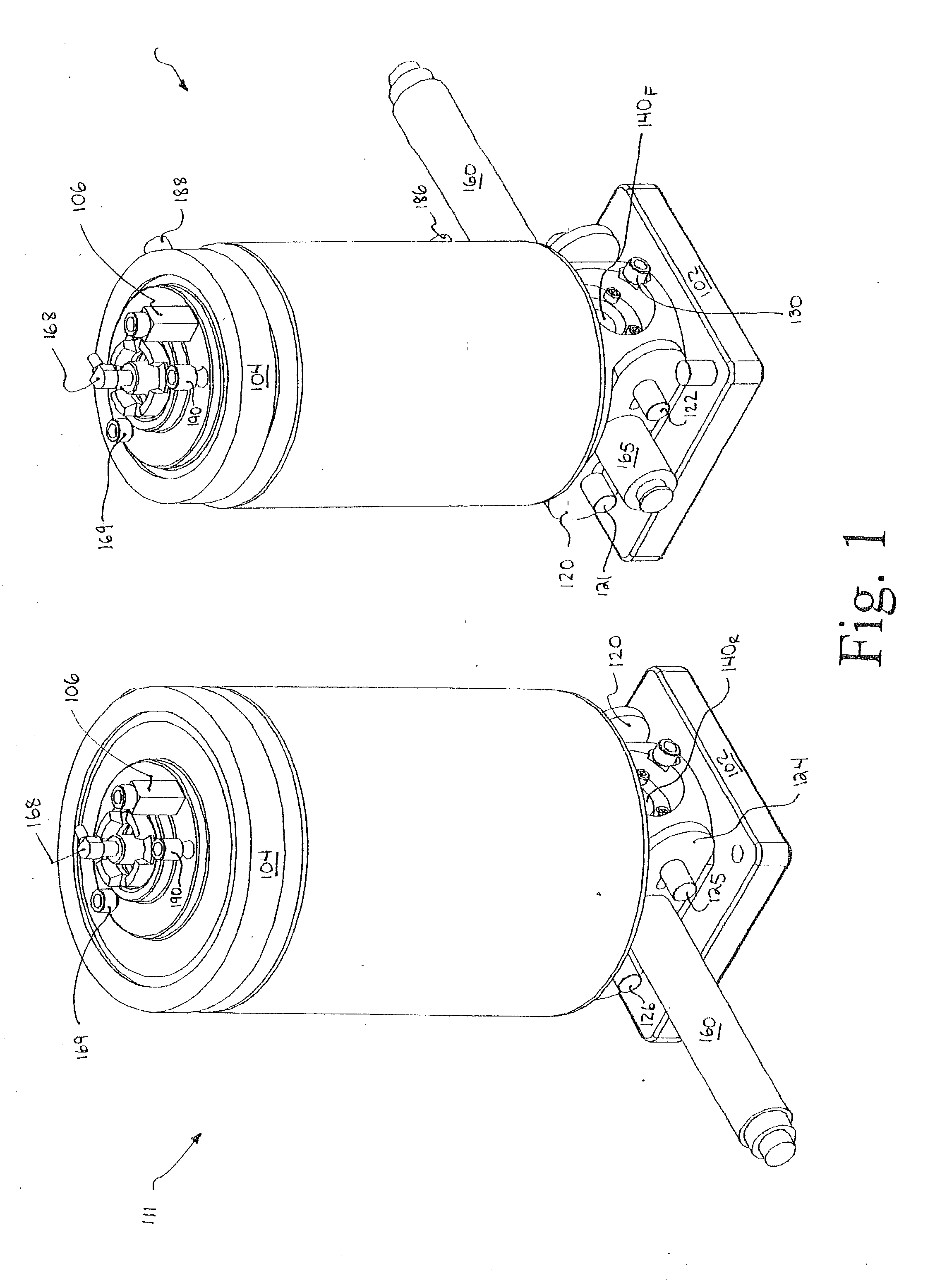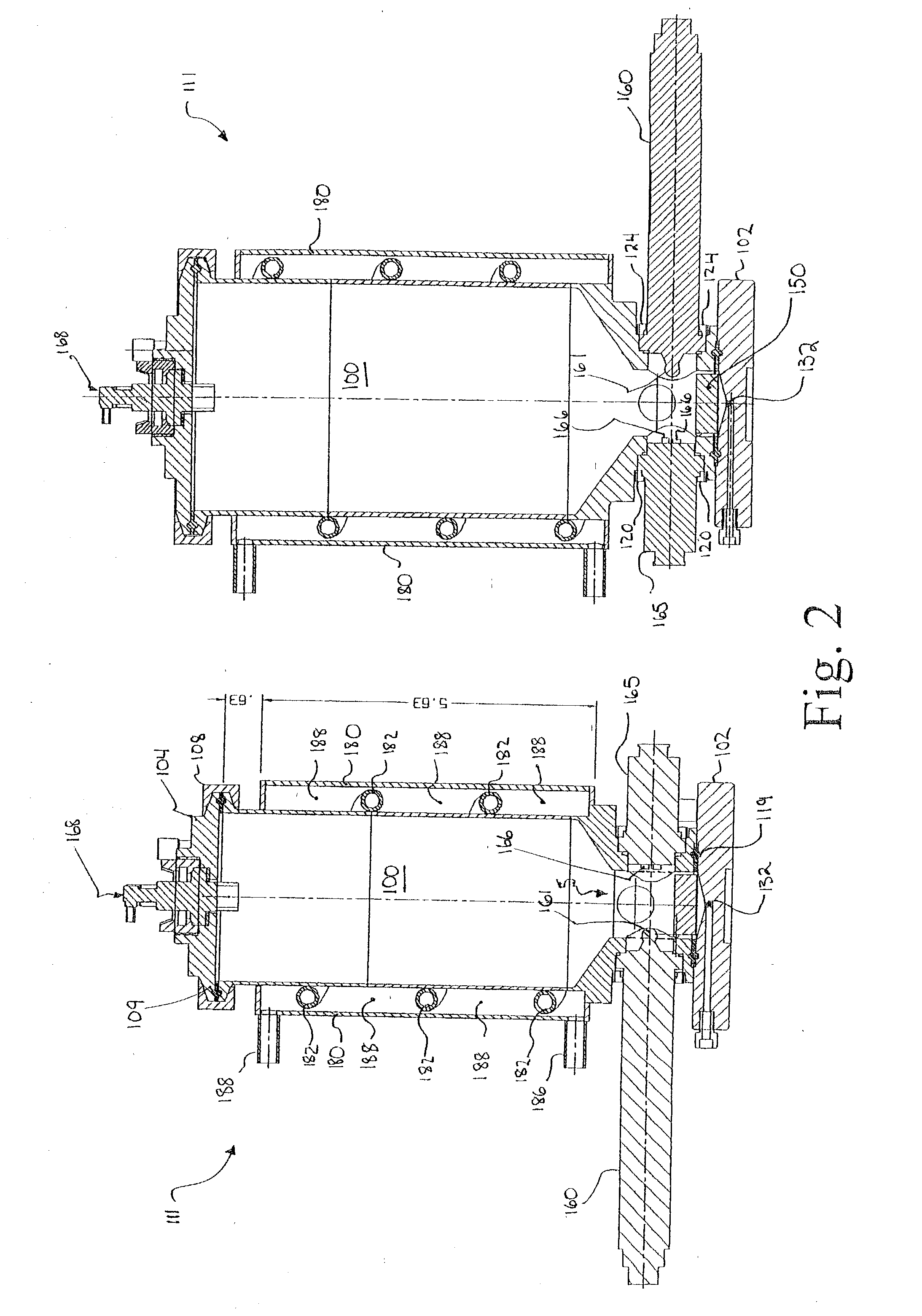Automated fluid filtration system for conducting separation processes, and for acquiring and recording data thereabout
a tangential flow and fluid filtration technology, applied in the direction of filtration separation, separation processes, instruments, etc., can solve the problems of consuming a developer's time, tedious tff process development, and iterative methodologies, and achieve the effects of fast, economical, repeatable, and accura
- Summary
- Abstract
- Description
- Claims
- Application Information
AI Technical Summary
Benefits of technology
Problems solved by technology
Method used
Image
Examples
example 1
[0112] An automated tangential flow filtration system according to the present invention is configured in accordance with the parameters set forth in the following Table:
4 Parameter Value Membrane Area 50 cm.sup.2 Minimum Recircula- <20 ml / PXL 50 tion Volume Concentration Ratio <1 liter / m2 Starting Volume 200 ml to 1 L Feed Pressure 6 Bar (86 psi) Feed Flow Rate Up to 100 ml / min Process Temperature 4-55.degree. C. pH 1-14 Tanks 1000 mL Recycle Device Holder PXL Standard Pumps: Feed (range) 0-100 ml / min at 80 psi Filtrate (range) 0-50 ml / min at 10 psi Coflow (range) 0-100 ml / min at 80 psi Transfer (range) 0-100 ml / min at 10 psi Valves On / Off Retentate Back Pressure 8 Port Selector Pressure Indicators Feed Range: 0-6 bar (90 psi) Accuracy: + / - 0.5% FS Retentate Range: 0-6 bar (90 psi) Accuracy: + / - 0.5% FS Filtrate 1 Range: 0-6 bar (90 psi) Accuracy: + / - 0.5% FS Filtrate 2 Range: 0-6 bar (90 psi) Accuracy: + / - 0.5% FS Flow Indicators Feed w / Totalizer Range: 0-100 ml / min Accuracy: + / -...
PUM
| Property | Measurement | Unit |
|---|---|---|
| volumes | aaaaa | aaaaa |
| volume | aaaaa | aaaaa |
| volumes | aaaaa | aaaaa |
Abstract
Description
Claims
Application Information
 Login to View More
Login to View More - R&D
- Intellectual Property
- Life Sciences
- Materials
- Tech Scout
- Unparalleled Data Quality
- Higher Quality Content
- 60% Fewer Hallucinations
Browse by: Latest US Patents, China's latest patents, Technical Efficacy Thesaurus, Application Domain, Technology Topic, Popular Technical Reports.
© 2025 PatSnap. All rights reserved.Legal|Privacy policy|Modern Slavery Act Transparency Statement|Sitemap|About US| Contact US: help@patsnap.com



